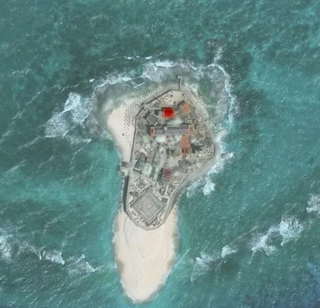Amboyna or amboina may refer to:

The Amboyna massacre was the 1623 torture and execution on Ambon Island of twenty-one men, including ten of whom were in the service of the English East India Company, and Japanese and Portuguese traders and a Portuguese man, by agents of the Dutch East India Company (VOC), on accusations of treason. It was the result of the intense rivalry between the East India companies of England and the United Provinces in the spice trade and remained a source of tension between the two nations until late in the 17th century.

The Tortricidae are a family of moths, commonly known as tortrix moths or leafroller moths, in the order Lepidoptera. This large family has over 11,000 species described, and is the sole member of the superfamily Tortricoidea, although the genus Heliocosma is sometimes placed within this superfamily. Many of these are economically important pests. Olethreutidae is a junior synonym. The typical resting posture is with the wings folded back, producing a rather rounded profile.

Hepeviridae is a family of viruses. Human, pig, wild boar, sheep, cow, camel, monkey, some rodents, bats and chickens serve as natural hosts. There are two genera in the family. Diseases associated with this family include: hepatitis; high mortality rate during pregnancy; and avian hepatitis E virus is the cause of hepatitis-splenomegaly (HS) syndrome among chickens.

Pterocarpus indicus is a species of Pterocarpus native to southeastern Asia, northern Australasia, and the western Pacific Ocean islands, in Cambodia, southernmost China, East Timor, Indonesia, Malaysia, Papua New Guinea, the Philippines, the Ryukyu Islands, the Solomon Islands, Thailand, and Vietnam.

The Amboyna cuckoo-dove is a dove in the genus Macropygia found in the Moluccas and New Guinea. It was one of three new species defined when the slender-billed cuckoo-dove was split up in 2016 and retains the Latin binomial of the former species.[1]

The Archipini are a tribe of tortrix moths. Since many genera of these are not yet assigned to tribes, the genus list presented here is provisional.

Chlidanotinae is a subfamily of moths in the family Tortricidae.

The Cochylini are a tribe of tortrix moths. It used to be classified as the subfamily Cochylinae.

Amboyna Cay, also known as Vietnamese: Đảo An Bang; Malay: Pulau Amboyna Kecil; Datu Kalantiaw Island ; Mandarin Chinese: 安波沙洲; pinyin: Ānbō Shāzhōu, and other names, is an island of the Spratly Islands group in the South China Sea located just outside (SW) of the southwest of Dangerous Ground. It is SW of Barque Canada Reef, south of the London Reefs, and NW of Swallow Reef.
Phaeophlebosia is a monotypic moth genus in the subfamily Arctiinae erected by George Hampson in 1900. Its single species, Phaeophlebosia furcifera, the forked footman, was first described by Francis Walker in 1854. It is found in Australia, where it has been recorded from New South Wales, Victoria, Tasmania and South Australia.
Amboyna is a genus of moths belonging to the subfamily Tortricinae of the family Tortricidae.

The Euliini are a tribe of tortrix moths.

The Tortricini are a tribe of tortrix moths.

Ctenoplusia furcifera is a moth of the family Noctuidae. It is found in south-east Asia and the Pacific, including India, Taiwan, Australia and New Guinea.
HMS Mandarin was a Dutch gun-brig of 178 tons burthen (bm) and 12 guns that the British had captured at Amboyna in February 1810. She served as part of a four-vessel flotilla that captured Banda Neira. She was wrecked in November 1810.

Lithophane furcifera, the conformist, is a moth of the family Noctuidae. The species was first described by Johann Siegfried Hufnagel in 1766. It is found from central Europe, east to the Black Sea region, the Caucasus and western Siberia. In the mountains, it is found up to elevations of 1,800 meters.
HMS Amboyna was the Dutch brig Harlingen, which the British captured in the East Indies in 1796. They renamed her Amboyna after their recent capture of Ambon Island. She then served briefly in the Royal Navy before she was broken up in 1802.
Amboyna diapella is a species of moth of the family Tortricidae. It is found in Australia, where it has been recorded from Queensland.












